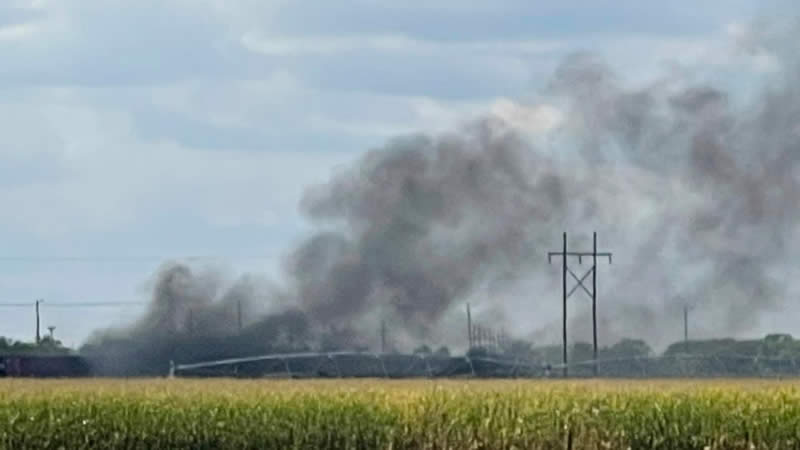The incident occurred around noon within an intermodal container situated on a railcar at Union Pacific’s Bailey Yard in North Platte. The precise cause of the explosion remains unclear, as per railroad spokeswoman Robynn Tysver. Fortunately, there were no reported injuries, and no railcars derailed during the incident.
Authorities swiftly evacuated all individuals within a one-mile radius of the explosion in the western section of the railyard due to the toxic smoke. U.S. Highway 30 was temporarily closed between North Platte and Hershey as a precautionary measure. Notably, Interstate 80 remained unaffected by the smoke. The exact number of homes included in the evacuation, mostly in the rural outskirts of North Platte—a city with a population of approximately 23,000—was not immediately disclosed.
Union Pacific confirmed that the fire had been successfully extinguished by 5:30 p.m. Thursday. Earlier, the North Platte Fire Department conveyed that the evacuations were executed in response to the fire at the railyard, which involved the emission of “heavy toxic smoke.” Further details were not provided by fire officials.
One of the containers involved in the incident was transporting perchloric acid—a chemical employed in explosives as well as various food and pharmaceutical products—according to Tysver. Authorities noted that the railcar that exploded had been stationary for a couple of hours before the incident.
Joanna Le Moine, deputy director of the Lincoln County Emergency Management Agency, underscored the vigilance of officials in monitoring the situation and weather conditions to determine the smoke’s direction. This precautionary measure aims to ensure the safety of responders and residents in the vicinity.
The railyard where the explosion occurred spans a vast 2,850 acres and extends up to eight miles in width at one point. In recent years, an eight-story observation tower was erected to allow spectators to witness the intricate sorting of thousands of railcars, transitioning from one train to another on Union Pacific’s critical east-west route.
Gregg Robertson, a volunteer present inside the Golden Spike Tower at the time of the explosion, described seeing a “big ball of flame” rising while he was in conversation with someone. He recounted, “And then it was just fire, fire, fire, constant for 10, 12 minutes maybe. And then the fire went down, and smoke kind of increased, and then it was just sparks coming out.”
The explosion produced two distinct plumes of smoke—black in the east and orange in the west, an unusual sight for a fire, as noted by Robertson.
Union Pacific officials reported that because the explosion took place near the western end of the railyard, and prevailing winds carried the toxic smoke away from the facility, part of the operation remained operational, enabling trains to continue their journey. Following the successful extinguishing of the fire Thursday evening, Union Pacific resumed full utilization of the railyard, stated spokeswoman Kristen South.
Railroad safety concerns have taken center stage nationwide since a Norfolk Southern train derailed and ignited in eastern Ohio, leading to evacuations and calls for reform from lawmakers and regulators.
While the National Transportation Safety Board is closely monitoring the situation, it has not initiated a formal investigation at this time, according to agency spokeswoman Sarah Taylor Sulick. The Federal Railroad Administration is also present at the railyard to oversee Union Pacific’s response to the explosion, as confirmed by agency spokesman Warren Flatau.


